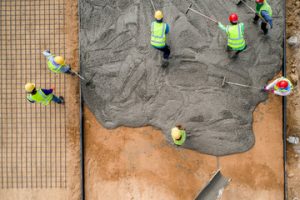A cross between Pomeranian and Siberian Husky, this highly intelligent dog breed demands engaged Owners who are ready to invest time in training, socialization and exercise. Pomsky sheds year-round and need regular brushing to keep their coats healthy.

They also need adequate mental stimulation to avoid boredom and destructive behaviors, such as chewing or digging. Interactive games, puzzle toys and obedience training are all great options for keeping the Pomsky’s mind active and challenged.
A Pomsky is a crossbreed dog that combines the best traits of its parent breeds. Smart, playful and energetic, they are wonderful family dogs and love to keep their people entertained. However, as with any breed of dog, it is important to watch out for potential health issues that can impact their quality of life. By providing regular veterinary care, eating a well-balanced diet, managing external parasites and exercising regularly, owners can help their Pomsky live a long, happy and healthy life.
Responsible Pomsky breeders carefully screen the dam and sire of their puppies for genetic conditions. This ensures that only the most healthy dogs contribute to future litters. As a result, Pomskies are generally very healthy and happy. Nevertheless, it is still important to visit the breeder in person and examine the condition of the parents before bringing one home. Look for a clean coat, healthy eyes and a strong, sturdy build to ensure that your pup is coming from a good source.
Like many other breeds, Pomskies are predisposed to dental disease caused by tartar build-up and gum infections. This can lead to other complications, so it is important to brush your Pomsky’s teeth on a regular basis and seek veterinary intervention when needed.
Another common condition that can affect Pomskies is patella luxation. This condition occurs when the kneecap shifts out of alignment with the femur, causing pain and swelling. Treatment options include glucocorticoid injections or surgery, so it’s best to consult your veterinarian for advice.
Pomskies are also prone to tracheal collapse, a condition that occurs when the cartilage in the tracheal rings becomes weak or shattered. This can cause difficulty breathing and coughing, so it’s important to discuss treatments or surgeries with your veterinarian.
Spaying or neutering your Pomsky is a great way to keep them healthy and to prevent unwanted behaviors such as marking or climbing. It can also reduce the risk of uterine infections in females and prostate problems in males. Speak with your vet for more information on the right time to spay/neuter your dog.
Training
Puppies are most receptive to training when they are young, but it’s important to start as soon as you bring your puppy home. Early socialization will help them become accustomed to other people and animals, as well as new environments. Puppy classes are an excellent way to do this in a safe, structured environment. Dogs also thrive on routine; establishing a daily schedule can help them feel secure and know what to expect throughout the day. This includes regular times for eating, potty breaks, and playtime, as well as training sessions.
As with any dog, it’s important to teach them obedience skills, such as sit, stay, and come. You can find obedience training books and DVDs that will guide you through the process, or you can hire a professional trainer to teach you the proper techniques. It’s also important to be consistent in your training so that your Pomsky understands what you expect from them.
It is very important to train your dog to understand that you are the pack leader and that they should obey you. Without this basic understanding, it will be difficult to train your dog effectively. Many people struggle with their dogs because they do not understand this concept, and end up shouting and chasing their dogs in an attempt to get them to listen to them.
The key is to train your Pomsky to calm down and respond to you in a controlled situation. The best way to do this is to use the calm freeze technique. This is a quick, simple, and effective method that you can use indoors or outdoors. To do the calm freeze, crouch down on your knees with your arms folded tight at your sides. Look at your Pomsky with a relaxed expression and wait for them to calm down.
When they are calm, say “calm” and give them a treat or a toy. Then repeat this exercise a few more times. This will show your Pomsky that you are not trying to intimidate them, but rather that they can only calm down if they listen to you.
Exercise
A blend of Pomeranians and Siberian Huskies, the Pomsky exhibits the spirited nature and athleticism of both breeds. They have a high energy level and require regular exercise to keep them happy, healthy and well-behaved. Daily physical activity like running and playing are important, but you should also include more intense activities to engage their body and mind. These activities help to build strength and trust, and promote a strong bond with you and your Pomsky.
Professional dog trainers agree that high-energy dogs need more than just walks and playtime to burn off energy. Advanced command training is an excellent way to mentally stimulate your Pomsky and tire them out. Use a variety of exercises and rewards to keep training sessions fun and engaging.
Indoor Exercise
Providing your Pomsky with plenty of indoor play is an easy and affordable way to satisfy their energy needs. This type of activity is particularly important during the winter months when outdoor activities may be limited or prohibited due to weather conditions. Games like hide-and-seek, and fetching with a soft, lightweight frisbee can be great ways to get your pet moving and burn off excess energy. Tug-of-war is another great option to increase the bond between you and your Pomsky. Just be sure to use a sturdy rope and set boundaries to ensure safety.
Dog Parks
Visiting a dog park on a regular basis is an excellent way to allow your Pomsky socialize with other dogs and burn off some of their pent-up energy. Dog parks are typically fenced and provide an environment that is safe for both small and large dogs.
Swimming
A swim in a pool, lake or beach is a great way for your Pomsky to cool off and burn energy. Be sure to supervise them closely at all times. Swimming is a great low-impact activity that can be done at any age.
Keeping your Pomsky active not only benefits their physical health, but it can help to curb unwanted behaviors and improve their quality of life. Unwanted behaviors such as excessive barking, digging in the trash or chewing on shoes are often signs that your pet isn’t getting enough exercise. Adding a mix of physical and mental exercises to your Pomsky’s routine is the best way to keep them happy, healthy, and well-behaved.
Care
Pomskies’ thick double coats help them stay warm in cold climates but can lead to overheating if not properly managed. Therefore, incorporating several care tips can greatly improve your Pomsky’s overall health and well-being. Among the most important are proper nutrition, hydration, regular vet visits, and parasite prevention.
Proper nutrition is important for all dogs, but it’s particularly crucial for Pomskies living in warm climates. A diet rich in nutrients will promote healthy hair follicles and reduce shedding, while also improving the sheen of their coat. Aim for a diet that’s high in protein and healthy fats, while avoiding artificial ingredients and cheap fillers.
To manage your Pomsky’s fur, brush them regularly to remove dead hair and prevent matting. In addition, bathing them on a routine basis is essential, especially during shedding seasons. However, avoid over-bathing as it can strip the natural oils in your dog’s coat and skin. A good rule of thumb is to bathe them every 4 to 6 weeks.
Another important care tip is to make sure your dog’s environment is cool and free of stress. Stress can cause a variety of problems, including excessive shedding and dry skin. Keeping their environment clean and free of dust, dirt, and debris will significantly enhance their overall wellbeing.
Lastly, regular veterinary check-ups are essential to ensure that your Pomsky is healthy and happy. Bring up any concerns about their coat or skin to your vet during these visits for professional advice and recommendations.
Purchasing a Pomsky is an investment, so be sure that you’re ready to commit to the long term costs of owning one before bringing them home. Likewise, consider checking local shelters and rescue groups as they may have a Pomsky in need of a loving home. Rescuing a puppy can save you up to $5,000, which is significant when considering the cost of breeding this desirable designer dog breed. Moreover, fostering a Pomsky can be a very rewarding experience as you’ll get to know the dog while supporting their well-being.








